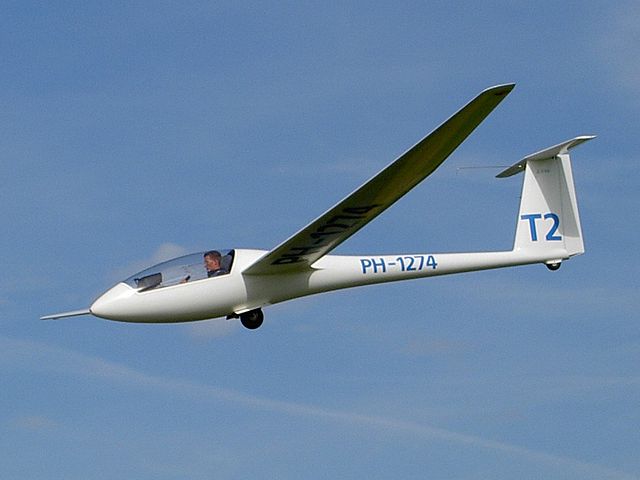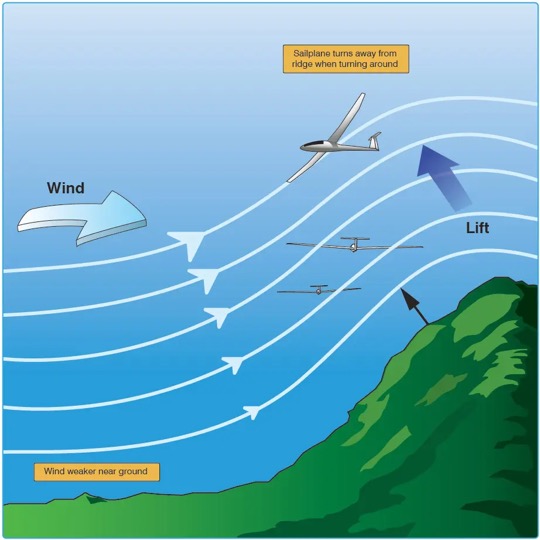
The fun (and the challenge) of gliders is that they soar without the use of an engine. Inevitably, they all eventually run out of lift and return to the ground. But during that beautiful flight, how long can a glider fly for?
The average glider training flight lasts about 20-30 minutes, while pleasure and competition flights usually last a few hours. The world record for longest duration glider flight is just over 70 hours. The length of glider flights depend on the pilot’s endurance and the ability to find lifting air.
Practically speaking there are a number of factors that can determine how long a glider can stay in the air. Here we will look at these factors in detail to discuss how long a glider can fly for.
How Long Do Gliders Fly?
When we discuss how long a glider can fly we can be referring to two different metrics: distance covered, or time in the air.
Now you might think that one goes with the other, but that is not always the case.
A glider can stay in a consistent area of lift to stay airborne and as a result not cover much distance over the ground.
Think of it a bit like a blimp circling over a sporting event, in the air but not going far.
- The current world record for longest distance flown in a glider was set in 2003, covering 3,009km (1,870 miles) using mountain wave lift in Argentina. This flight used 3 turn points to cover the recorded distance.
- The record distance for a flight between 2 points is 2,187km (1,358 miles).
- The current record for the longest duration (time) flight in a 2 seat glider is just over 70 hours set in Hawaii in 1961.
- The longest duration flight in a 1 seat glider is just over 56 hours set in the French Alps in the 1950s.
These records have not been re-visited due to the concern for pilot fatigue over such long periods. Additionally as they were set by staying in an area of consistent lift they are more a demonstration of endurance rather than skill.
Average flight times and distances do not often rival the record flights listed above.
Training flights while pursuing your glider license are typically 20-30 minutes and stay within sight of the airfield. Introductory flights often do not include thermalling and as a result are similar in length to training flights. Average pleasure and competition flights can cover 200-300km and last several hours.
For more reading on this, see our article on “How far can gliders fly?”
How do gliders stay in the air for long periods of time?
Gliders rely on external sources of lift to climb and stay aloft. These sources of lift are a result of weather, geography, or a combination of the two.
The three general categories of lift glider pilots use are thermal lift, ridge or slope lift, and mountain wave lift.
Ridge lift
Ridge lift results from wind blowing across a ridge, slope, or similar change in geography that forces the wind upward.
This results in a narrow area of updraft on the upwind side of the geographic feature causing the lift. This can be a locally consistent source of lift and in the case of a long ridge line or mountain range can extend for miles.

Mountain Wave
Mountain wave lift requires similar conditions to ridge lift, but the lift generated is typically stronger and covers a larger area.
Strong winds blowing perpendicular to mountains accelerate as they are forced up the slope into the thin air at the mountain peak. The rising air encounters a stable air mass over the peak and is redirected towards the ground.
The air encounters another stable air mass as it descends the downward side of the mountain. The fast moving air bounces between the two stable air masses resulting in an areas of lift.
This process can repeat for several cycles, as shown below.

Thermal Lift
Thermal lift occurs when the ground is warmed by the sun leading to the air mass over the ground to be heated and rise.
These areas of rising air are usually topped by cumulus clouds and surrounded by areas of descending air known as “sink”. Thermal lift allows for more cross country flight options but is the least consistent type of lift in terms of duration.

How hard is it to keep a glider flying?
If the goal is just staying up without necessarily going anywhere basic glider pilot skills can be sufficient and endurance is more of a factor.
This is because lift sources such as mountain wave (used for both endurance records mentioned above) can be present for days at a time.
As a result, the pilot could just circle within the area of lift and not need to land as long as they can physically endure the experience.
Navigating a distance course between two or more points however, requires more skill as a glider pilot.
This is because it will require leaving one source of lift and finding others along the route. This requires knowledge of weather patterns along the route and visual cues including surface features and cloud formations to identify potential lift.
For more discussion on this topic, see our article on “are gliders hard to fly?”
Do newer gliders fly longer?
As with any technology, glider design has improved over the years.
Tube and fabric construction has given way to fiberglass and composite construction. Shapes have become more aerodynamic to decrease drag; and there are even flight computers to help with route planning for gliders.
The general principles that allow gliders to stay in the air apply to all types of gliders.
That being said, cross country flying is more easily accomplished in more modern gliders because modern gliders tend to have much better glide and lift vs. drag properties; meaning they can cover more ground between lift sources, as well as regain altitude more quickly when in lift.
What about gliders that have motors?
Gliders with motors fall into two categories: touring motor gliders, and stowed motor gliders.
Touring motor gliders generally look like small single engine airplanes. They can take off on their own, fly under power to a lift source, then shut down the motor.
Stowed motor gliders can extend and retract their motor as needed.
Touring motor gliders and some stowed motor gliders are also able to self launch. All motor gliders can use their motors to get to sources of lift, and stay aloft to prevent off-field landing.
This means that practically motor gliders can stay flying in areas of no lift where other gliders would need to land.
For the purpose of records, competitions, and general bragging rights the time and distance covered with the motor on do not count.
So how long can a glider fly for?
By now we have made it apparent that the answer is that it depends. When speaking about just time in the air, the primary limitation is pilot endurance since areas of wave lift can persist for days and staying in that lift is not incredibly difficult.
Navigating long distance flights like the records discussed earlier becomes more challenging as careful planning, favorable weather and pilot skill all need to come together. These flights do demonstrate the amazing abilities of gliders and skilled pilots but do not represent the norm.
A glider can fly as far and as long as a pilot can manage to navigate between sources of lift along the desired route.
This is the basis for glider competitions in which pilots fly a designated route and are scored based on the time taken to accurately fly the course or “task”. An average glider flight with a reasonably experienced pilot and good weather can cover 200-300km of distance and stay up for several hours.



